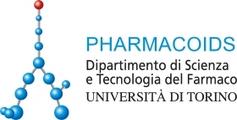Farmacologia degli autacoidi
"Pharmacology of Autacoids (PHARMACOIDS)"
Componenti
- Rosa Arianna Carolina (Coordinatore/Coordinatrice)
Contatti
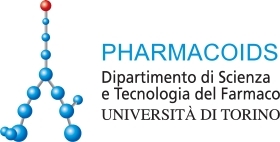
Settore ERC
Attività
Studio dell’effetto fisiopatologico e della modulazione farmacologica degli autacoidi, un gruppo eterogeneo di mediatori endogeni in grado di esercitare effetti sia paracrini che autocrini e che comprende amine (es. istamina, serotonina), polipeptidi (es. angiotensina II, bradichinina, kallicreina, sostanza P, ormone natriuretico), derivati lipidici (es. prostaglandina, leucotrieni, trombossano A2, fattore attivante le piastrine) o altri (es. ossido nitrico, citochine). Di particolare interesse il possibile ruolo degli autacoidi nella fisiopatologia renale e nell’insorgenza/progressione della nefropatia diabetica. La nefropatia diabetica appartiene alle complicanze microvascolari del diabete mellito. Colpisce quasi il 30-45% dei pazienti diabetici. Le attuali terapie mirano a rallentare la progressione della malattia migliorando il controllo glicemico o inibendo il sistema renina-angiotensina-aldosterone; tuttavia, per un'ampia percentuale di pazienti è ancora necessaria la terapia renale sostitutiva. Pertanto, vi è un urgente bisogno di comprendere meglio i meccanismi molecolari che guidano la nefropatia diabetica per identificare nuovi bersagli farmacologici efficaci. La nefropatia diabetica è iniziata da disturbi del diabete che inducono nel metabolismo del glucosio, che innescano altri processi metabolici, emodinamici, infiammatori e fibrotici promossi anche dagli autacoidi che contribuiscono alla progressione della malattia. Gli elementi patogenetici della nefropatia diabetica sono rappresentati da: iperfiltrazione glomerulare e alterazioni strutturali della membrana basale glomerulare. Identificare una modellistica in vitro efficace per lo studio del ruolo di mediatori endogeni coinvolti in questi processi e della loro possibile modulazione farmacologica è fondamentale per identificare nuovi target farmacologici. Studi sperimentali nel ratto diabetico hanno dimostrato che l'iperglicemia causa un aumento del riassorbimento prossimale, eventi che da compensatori diventano promotori dell’instaurarsi della nefropatia diabetica. Pertanto, sono necessari test in vitro per valutare in maniera semplice e standardizzata il possibile ruolo fisiopatologico di mediatori endogeni coinvolti nell’eziopatologia della nefropatia diabetica e di conseguenza identificare nuovi potenziali target farmacologici per contrastare questo evento. Our research focuses on the characterization of the role of histamine in the development of acute and chronic renal diseases, diabetic nephropathy included. In particular, we are interested in the validation of the histamine H4 receptor as a possible pharmacological strategy to counteract the onset/development of diabetic nephropathy. L'obiettivo generale è quello di creare un atlante erboristico occitano condiviso riconsiderando le proprietà farmacologiche dei rimedi erboristici tradizionali. In letteratura sono state descritte come anti-iperglicemiche più di 400 specie vegetali che potrebbero rappresentare una strategia preventiva nei confronti del diabete mellito di tipo 2. Tuttavia, non vi sono evidenze dirette del loro effetto diretto sull'insorgenza/progressione della nefropatia diabetica. Pertanto, partendo da un approccio etnobotanico, l’intento è di identificare rimedi erboristici che potessero essere efficaci nella progressione di questa dannosa complicanza. Prof. P.L. Chazot, Department of Biosciences and Wolfson Research Institute for Health and Wellbeing, Durham University, UK Prof. I. Obara, School of Pharmacy, The Faculty of Medical Sciences, Newcastle University, UK Prof. A. Pini, Dipartimento di Medicina Sperimentale e Clinica, University of Florence, Italy Prof. B. Bussolati and Dr. R Verta Dipartimento di Biotecnologie Molecolari e Scienze per la Salute, University of Turin, Italy Dr. C. Grange, Dipartimento di Scienze Mediche, University of Turin, Italy Dr. R.L. Thurmond, Janssen Reasearch and Development, LLC, San Diego, USA. Dr. S. Liu, Pfizer Global Research & Development, Kent, UK Prof. A. Barge, Dipartimento di Scienza e Tecnologia del Farmaco, University of Turin, Italy Prof. M. Rivoira and Dr. A. Pons, Dipartimento di Studi Umanistici, University of Turin, Italy Prof. P. Heiniger-Casteret, Laboratoire ITEM, Université de Pau et des Pays de l’Adour, Pau, France
Study of the pathophysiological effect and pharmacological modulation of autacoids, a heterogeneous group of endogenous mediators capable of exerting both paracrine and autocrine effects and which includes amines (e.g. histamine, serotonin), polypeptides (e.g. angiotensin II, bradykinin, kallikrein, substance P, natriuretic hormone), lipid derivatives (e.g. prostaglandin, leukotrienes, thromboxane A2, platelet-activating factor) or others (e.g. nitric oxide, cytokines). Diabetic nephropathy belongs to the microvascular complications of diabetes mellitus. It affects almost 30–45% of overall diabetic patients. The current therapies aimed to slow the disease progression by ameliorating the glycemic control or inhibiting the renin–angiotensin aldosterone system; however, a large proportion of patients still undergo renal replacement therapy. Therefore, there is an urgent need to better understand the molecular mechanisms driving diabetic nephropathy to identify new effective pharmacological targets. Diabetic nephropathy is initiated by diabetes-induces disturbances in glucose metabolism, which trigger other metabolic, hemodynamic, inflammatory, and fibrotic processes promoted also by autacoids that contribute to disease progression. The pathogenetic elements of diabetic nephropathy are represented by: glomerular hyperfiltration and structural alterations of the glomerular basement membrane. Identifying an effective in vitro modeling for studying the role of endogenous mediators involved in these processes and their possible pharmacological modulation is essential to identify new pharmacological targets. Experimental studies in diabetic rats have shown that hyperglycemia causes an increase in proximal reabsorption, events which from compensatory become promoters of the onset of diabetic nephropathy. Therefore, in vitro tests are needed to evaluate in a simple and standardized way the possible pathophysiological role of endogenous mediators involved in the etiopathology of diabetic nephropathy and consequently identify new potential pharmacological targets to counteract this event. Our research focuses on the characterization of the role of histamine in the development of acute and chronic renal diseases, diabetic nephropathy included. In particular, we are interested in the validation of the histamine H4 receptor as a possible pharmacological strategy to counteract the onset/development of diabetic nephropathy. The general goal is to create a shared OCCITAN herbal atlas reconsidering the pharmacological properties of the herbalist traditional remedies. In the literature, more than 400 plant species have been described as anti-hyperglycemic and could be suggested as healthy food for preventing type 2 diabetes mellitus. However, no direct evidence is reported on their direct effect on the onset/progression of diabetic nephropathy. Therefore, starting from an ethnobotanical approach, we aim to identify herbal remedies that could be effective in the progression of this detrimental complication. Prof. P.L. Chazot, Department of Biosciences and Wolfson Research Institute for Health and Wellbeing, Durham University, UK Prof. I. Obara, School of Pharmacy, The Faculty of Medical Sciences, Newcastle University, UK Prof. A. Pini, Dipartimento di Medicina Sperimentale e Clinica, University of Florence, Italy Prof. B. Bussolati and Dr. R Verta Dipartimento di Biotecnologie Molecolari e Scienze per la Salute, University of Turin, Italy Dr. C. Grange, Dipartimento di Scienze Mediche, University of Turin, Italy Dr. R.L. Thurmond, Janssen Reasearch and Development, LLC, San Diego, USA. Dr. S. Liu, Pfizer Global Research & Development, Kent, UK Prof. A. Barge, Dipartimento di Scienza e Tecnologia del Farmaco, University of Turin, Italy Prof. M. Rivoira and Dr. A. Pons, Dipartimento di Studi Umanistici, University of Turin, Italy Prof. P. Heiniger-Casteret, Laboratoire ITEM, Université de Pau et des Pays de l’Adour, Pau, France
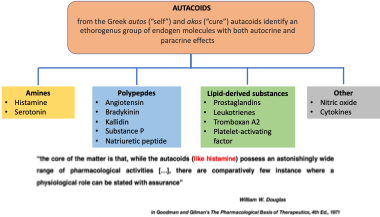
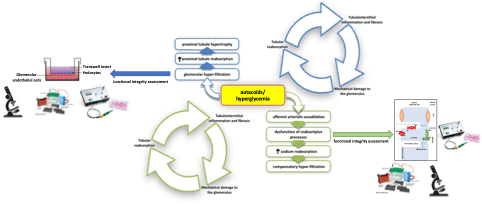
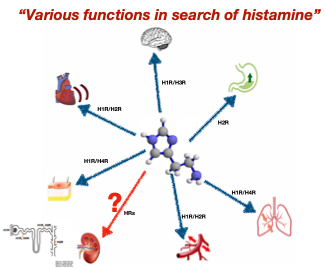
Grant for Internationalization - GFI - Programmazione Triennale 21-23
“Targeting barriers leakage to prevent diabetic nephropathy and brain: which scope for traditional herbal remedies?”
Grant for Internationalization - GFI - Programmazione Triennale 21-23
“Targeting barriers leakage to prevent diabetic nephropathy and brain: which scope for traditional herbal remedies?”
Prodotti della ricerca





